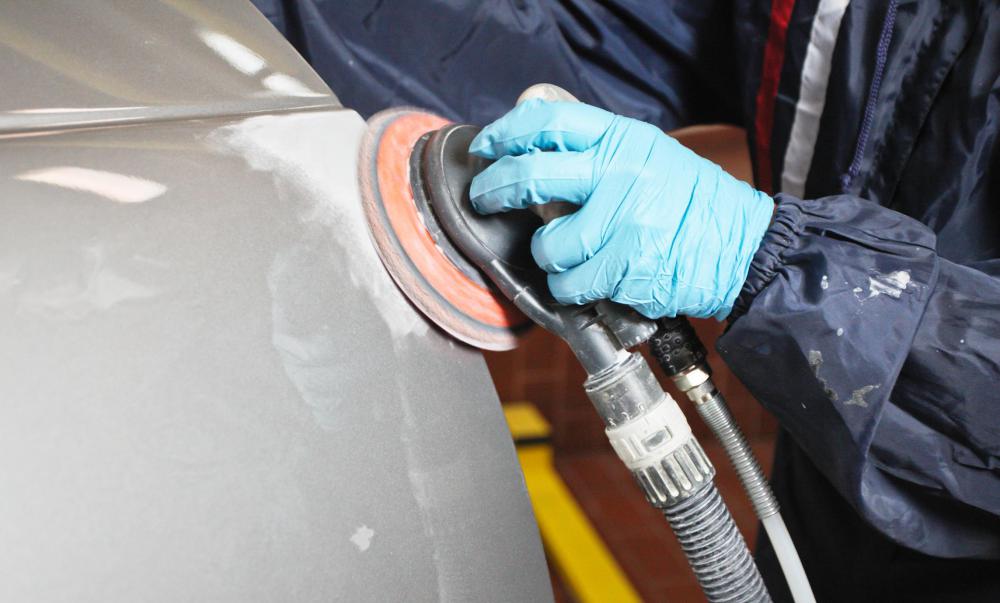At WiseGEEK, we're committed to delivering accurate, trustworthy information. Our expert-authored content is rigorously fact-checked and sourced from credible authorities. Discover how we uphold the highest standards in providing you with reliable knowledge.
What are the Different Methods of Insurance Fraud Detection?
There are a number of different methods of insurance fraud detection, often based on the type of insurance fraud being attempted. Life insurance fraud, for example, is usually perpetrated at the point of making the application for life insurance, and is best detected by the agent’s instincts or the insurers’ underwriting processes. Property insurance fraud, however, is generally committed once the policy has been in force for some period of time, by damaging, destroying or stealing the insured property. Property insurance fraud is best detected by post-loss investigation.
The importance of insurance fraud detection and prevention is highlighted by the fact that hundreds of billions of dollars are paid out annually for fraudulent claims. If insurance fraud were completely eliminated, premiums would decline significantly. Thus, while insurance fraud detection is a named element of an insurance agent’s job, it’s also the responsibility of all consumers.

Insurance fraud can take any of a number of different forms. Health insurance fraud is the filing of false claims, usually for injuries and illnesses that don’t exist. False claims are often filed after a staged automobile accident, usually through a medical practitioner in on the scheme, and can cost an insurance company hundreds of thousands of dollars. In some cases, legitimate claims are inflated, especially if an injury is difficult to verify, like back injury. The volume of injury claims filed in the United States makes it virtually impossible for insurance companies to perform thorough investigations of each one, so they must give priority in their investigations to the most potentially costly claims. Fraudsters, knowing this, will often try to avoid detection by filing smaller claims. To fight fraud, many insurers routinely require their health insurance policy-holders to get second opinions for serious diagnoses.

Automobile insurance fraud is the filing of false claims against an automobile insurance policy. A popular scheme is to leave a car where it’s likely to be stolen, and then file a claim for a stolen car once the expected theft occurs. Automobile policy holders will sometimes attempt to perpetrate a low-level fraud by asking an auto body shop to issue an inflated invoice, with the excess being split between the policy holder and the shop. This type of insurance fraud can be difficult to detect, but insurance companies sometimes get tips from the general public.

Property insurance fraud involves man-made hazards like fire or flood. For example, a property owner may set a structure afire to collect the insurance, or might claim that an insured item was stolen. Normal investigative procedures are frequently the best method for uncovering insurance fraud.
Life insurance fraud is somewhat different. The loss is real, but upon investigation, it turns out that there were material misrepresentations on the application, and the policy shouldn’t have been issued. For example, many insurers refuse outright to insure anyone with cancer and those that do charge significantly higher premiums. If someone has cancer, then, and fails to disclose this when taking out a life insurance policy, this is life insurance fraud. Even if the policyholder dies from some cause unrelated to the cancer, most insurance companies would deny a death claim under such circumstances, instead returning the premiums paid. In most cases, the only time an insurer may deny a life insurance claim for material misrepresentation is during the policy’s first two years; most deaths that occur during the first two years of a life insurance policy’s existence are carefully investigated.

Insurance fraud detection is first the responsibility of the insurance agent, and it’s a difficult job to perform. Those filing fraudulent insurance applications are usually bright enough not to alert the agent to their scheme, so the agent must be very conscientious of the possibility of fraud. Insurance agents are paid by commission, though, which actually gives them a disincentive to try to detect insurance fraud, because exposing an application as fraudulent means that not only will they not earn a commission, but they also lost the time involved in making the sale.

Insurance fraud detection is also the responsibility of the insurance companies, and they take that responsibility very seriously, employing underwriters to screen applications, as well as claims adjusters and investigators to double-check claims. The underwriting process — that is, the process of investigating an insurance application before it’s approved and the policy issued — has become far more sophisticated, relying on more different sources of information to verify application information. Others involved in the claims process, such as doctors and auto body repair shops, are also responsible for insurance fraud detection, and most of them can be counted on to report attempts at insurance fraud by their patients or third parties.
AS FEATURED ON:
AS FEATURED ON:


















Discuss this Article
Post your comments